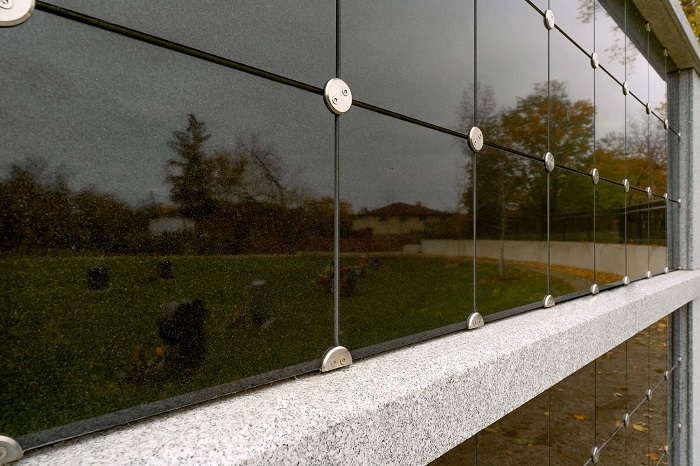Death is a natural part of the cycle of life. Hence, it’s important for all of us to plan ahead, especially to help safeguard our families. As we ponder the inevitable, it’s essential to consider the various options available for final resting places. One of the lesser-known but increasingly popular choices today is the columbarium. Let’s delve into the workings of a columbarium, shedding light on what it is, how it operates, and why it has gained favor among individuals seeking a serene and unique final resting place.
What is a Columbarium?
A columbarium is a structure specially designed to house cremated remains in individual compartments known as niches. The word “columbarium” finds its origins in the Latin word “columba,” meaning dove. You may be wondering how it’s related to this bird. Well, the answer is these structures are adorned with niches that resemble dovecotes. The latter were once used to house doves.
Columbaria are commonly located within cemeteries, churches, or mausoleums, offering families a place to memorialize their loved ones. It’s also a tranquil and dignified setting where families and friends can gather to pay respects. Each niche in a columbarium serves as a final resting place for the urn containing the cremated remains of a deceased person.
The Operation of a Columbarium
How do things work in a columbarium? Let’s find out!
- Niche Selection: The process begins with the selection of a niche within the columbarium. Much like choosing a burial plot, families can choose a niche that suits their preferences, considering factors such as location within the columbarium, size, and aesthetic details.
- Cremation: Before the urn can be placed in the chosen niche, the deceased must undergo cremation first. Cremation reduces the body to ashes and bone fragments, which are then placed in a sealed urn. Families often personalize the urn, choosing a design or inscription that reflects their loved one’s personality.
- Placement: Once the urn is ready, it is placed within the selected niche in the columbarium. Niches are designed to securely hold the urn, protecting it from the elements and ensuring the memorial can last for a long time.
- Memorialization: Families can further personalize the niche with plaques, photographs, or other items that pay tribute to the deceased. This process allows visitors to connect with their loved ones and share memories in a meaningful way.
Why Choose a Columbarium?
A columbarium is a more modern final resting place for our loved ones’ remains. Here’s why it has gained popularity now over traditional cemeteries:
- Space Efficiency: One of the primary advantages of columbaria is the efficient use of space. In an era where available land for traditional burials is dwindling, this offers a sustainable solution. They occupy less ground space while accommodating a significant number of urns.
- Easy Visitations: A columbary provides a peaceful and accessible location for families to visit and remember their loved ones. Visitors can pay their respects in any season, enjoying the shelter provided by the structure.
- Personalization: Families can personalize the niches with various memorabilia, creating a unique and meaningful space for their loved ones. These personalized touches serve as a lasting tribute to the deceased.
- Spiritual and Religious Significance: Many columbaria are located within churches and religious institutions, offering a spiritually meaningful place for the deceased to rest. This connection to a place of worship can be comforting for many families.
- Cost-Effective: Compared to traditional burial plots, columbaria can be a more cost-effective option. Since the individual compartments are small, they don’t cost as much as a burial plot. Families can often choose from a range of niches to suit their budget, making it accessible to a wide range of individuals.
Columbarium Designs
Columbaries have various designs, allowing individuals to choose one that resonates with their preferences and values. Some common columbarium designs include:
- Outdoor Columbaria: These are located in cemetery gardens or open-air settings, providing visitors with a connection to nature and the elements. Outdoor columbaria often feature beautiful landscaping, creating a serene atmosphere.
- Indoor Columbaria: These are typically found inside mausoleums or churches, offering a protected and climate-controlled environment for the urns. Families who prefer an indoor setting can benefit from year-round visitation.
- Glass-Front Columbaria: These columbaria feature glass doors on the niches, allowing visitors to see the urns and memorabilia inside. This design promotes a sense of transparency and connection.
Columbaries offer a unique and dignified alternative to traditional burial, providing families with a space-efficient, cost-effective, and customizable final resting place for their loved ones. It creates a meaningful and serene space for remembrance. With a variety of designs and locations available, you can choose a columbarium that aligns with your personal preferences, values, and spiritual beliefs.
As the popularity of cremation continues to rise, choosing a columbarium niche provides a harmonious and sustainable option for those seeking a peaceful and lasting tribute to the departed. Whether located within a place of worship or nestled in a tranquil garden, columbaria serves as a bridge between the past and the present, allowing loved ones to visit and remember in a serene and contemplative setting.


